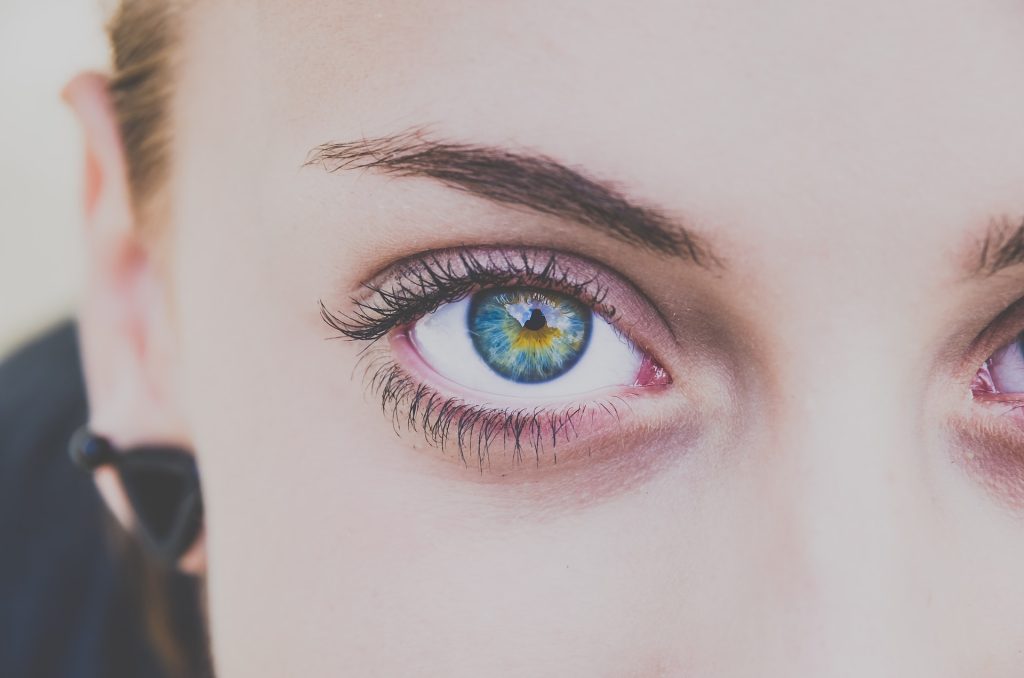Changes in eye color are a rarity, often leaving individuals perplexed and curious about the underlying reasons. While it’s normal for the color of your eyes to seemingly shift when your pupils dilate or in response to environmental factors, there are instances where actual changes occur. These alterations could be harmless, merely reflecting variations in the iris, or they might signal an underlying condition that demands attention. In this exploration, we’ll delve into the factors contributing to eye color changes, ranging from genetics and diseases to medications and trauma.

Understanding Eye Color Changes: Iris Insights
An array of conditions can influence changes in eye color, and these alterations may specifically involve the iris. Here’s a closer look at some iris-related factors contributing to these changes:
1. Iris Freckles
Small brown spots, akin to freckles, may appear on the surface of the iris due to sun exposure. These iris freckles are generally harmless and share a resemblance to their skin counterparts.
2. Iris Nevi
Larger freckles or dark growths resembling moles can emerge on the eye’s surface. Known as iris nevi, these growths are caused by melanocytes, pigment cells, and while usually benign, they carry a risk of developing into cancer and should be monitored by a doctor.
3. Lisch Nodules
Associated with neurofibromatosis, Lisch nodules are small brown bumps growing over the iris. While not impacting vision, their presence aids in diagnosing this genetic nervous system disorder.
4. Fuchs Heterochromic Iridocyclitis
This condition involves inflammation of the front structures of the eye, leading to iris atrophy, a loss of pigment, and potential complications like cataracts and glaucoma.
5. ICE Syndrome
A rare combination of conditions affecting the iris and cornea, the ICE syndrome leads to tissue spots or blotches on the iris, influencing eye color and potentially causing glaucoma.
6. Pigment Dispersion Syndrome
Primarily affecting nearsighted young males, this syndrome involves the loss of pigment from the iris, which can influence eye color and contribute to pigmentary glaucoma.
7. Uveitis
Inflammation of the middle eye layer, uveitis can alter eye color if the iris adheres to the lens, affecting the pupil’s size or shape. Immediate medical attention is crucial.
8. Horner’s Syndrome
Resulting from various conditions like strokes or tumors, Horner’s Syndrome can cause a noticeable difference in eye color due to depigmentation of the iris.
9. Injury or Trauma
Physical damage to the eye can lead to iris tissue loss, altering the appearance of eye color.
10. Dilated Pupil
A dilated pupil, symptomatic of conditions like strokes or brain injuries, can create the illusion of changed eye color due to reduced visibility of the iris color.

Beyond the Iris: Other Factors Influencing Eye Color Changes
Eye color changes aren’t exclusive to alterations in the iris. Various eye-related conditions can impact the appearance of your eyes:
1. Arcus Senilis
Common with aging, this hazy blue or white ring on the cornea results from lipid buildup and is typically harmless.
2. Keyser Fleischer Ring
A greenish/orange ring in the cornea, associated with Wilson’s Disease and elevated copper levels, necessitates medical attention.
3. Hyphema
Blood inside the eye, often following an injury or surgery, can influence eye color.
4. Cataracts
As the lens of the eye turns milky or grey due to aging, cataracts can affect vision and may require surgical intervention.
Medications and Eye Color Changes
Certain medications, especially glaucoma medications like prostaglandins, can cause permanent eye color changes over time. These changes usually manifest as a darkening of the eyes. Latisse, a prostaglandin medication used for eyelash lengthening, may also impact iris color, although evidence remains inconclusive.

What To Do If Your Eyes Are Changing Color
For most individuals, eye color remains consistent from infancy to old age. However, if you notice distinct color changes in either eye, seeking immediate attention from an ophthalmologist is paramount. While some alterations may be harmless, others could signify underlying health issues that require prompt diagnosis and treatment. Understanding the intricacies of eye color changes empowers individuals to prioritize their ocular health and seek professional guidance when needed.





